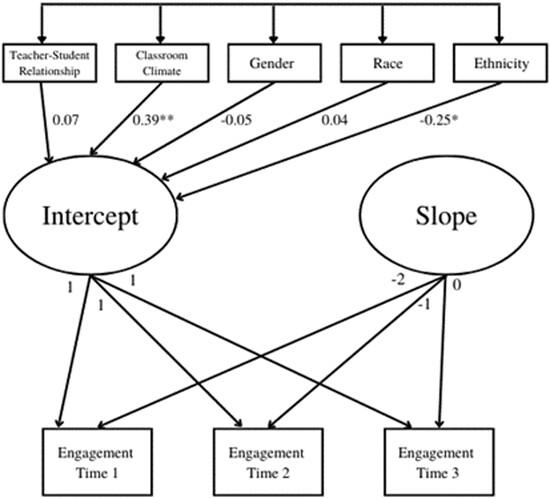Patterns and predictors of adolescent engagement in a mindfulness-based social–emotional learning program
Abstract
Introduction
Although mindfulness-based interventions (MBIs) show promise for promoting positive youth development, little is known about student engagement in MBIs. Initial research presents mixed findings in MBI engagement related to participant characteristics, and there is a lack of research examining the influence of context on engagement, despite the critical role context plays in academic engagement. This study examines the contribution of student demographic characteristics and classroom context to MBI engagement.
Methods
Survey engagement data were collected at three time points from 106 ninth grade students (Mage = 14.17 years, 60.4% female, 44.2% Black, 24.8% Hispanic/Latino) who participated in the Be CALM program during the 2021–2022 school year. Latent growth curve modeling was used to examine trajectory of student engagement and assess student and classroom predictors of engagement.
Results
There was no overall change in the trajectory of student engagement, although variability was observed across classes. Identifying as Hispanic/Latino was associated with lower engagement (β = −.25, p = .008), although this did not appear to be related to program experience. Peer connections predicted engagement at the end of the program (β = .39, p < .001). Post hoc analyses suggested that student engagement may be related to teacher program delivery quality.
Conclusions
Student engagement in MBIs appears related to classroom context more than student characteristics, although further research with larger samples is needed to assess the link between engagement and program outcomes. Findings have implications for designing school-based MBIs and training school staff to deliver them in culturally responsive ways.


 求助内容:
求助内容: 应助结果提醒方式:
应助结果提醒方式:


